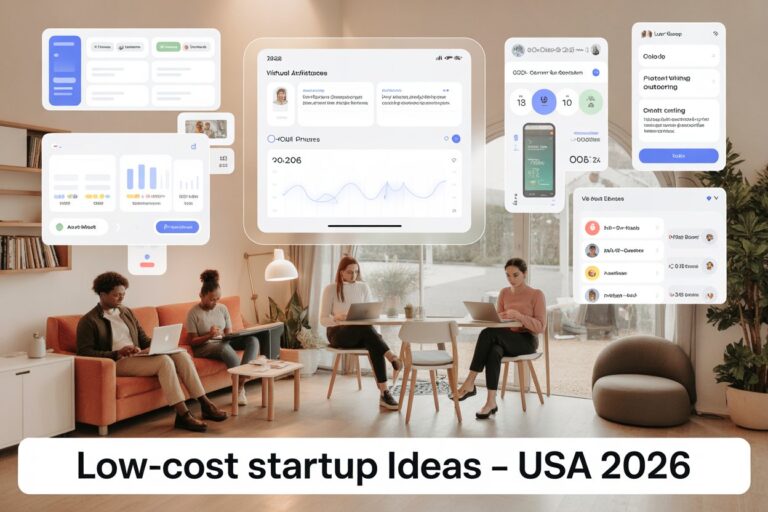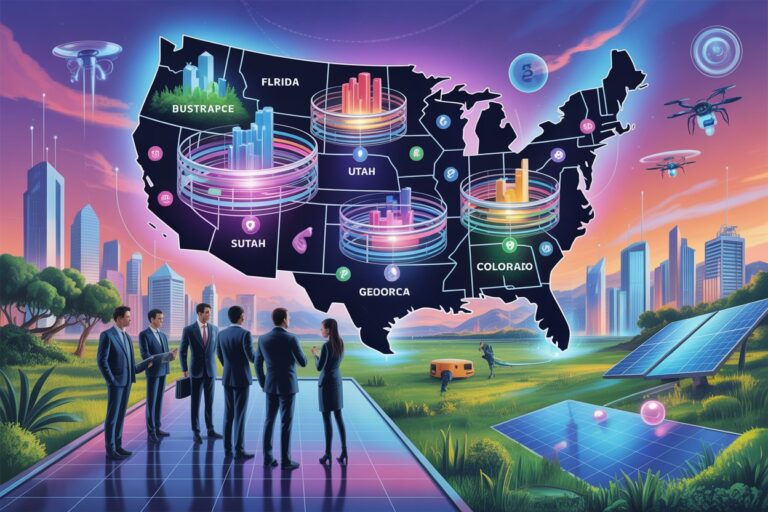Business Automation Tools 2026
Introduction to Business Automation in 2026
As businesses enter a more technology-driven world, automation has become a strategic necessity rather than a luxury. In 2026, business automation tools are more advanced, accessible, and critical than ever for small, medium, and large enterprises.
Whether you’re running a startup or managing a growing organization, leveraging automation can help you streamline operations, reduce manual labor, and enhance productivity.
In this article, we’ll explore the top business automation tools in 2026, how they work, their benefits, and how small businesses can use them to compete in today’s fast-paced environment.
What is Business Automation?

Business automation refers to the use of software and digital tools to automate repetitive tasks and workflows. This can range from automating email responses and customer service to managing payroll and inventory.
H3: Key Areas of Business Automation
- Marketing automation
- Financial automation
- Customer service automation
- Workflow and task management
- Sales automation
- Human resource automation
Why Automation Matters for Businesses in 2026
In the competitive business landscape of 2026, automation provides a powerful edge. Here are several reasons why it matters:
Cost Reduction
Automation reduces the need for manual labor, cutting operational costs significantly.
Increased Efficiency
Tasks that once took hours can now be completed in minutes or even seconds.
Better Accuracy
By minimizing human error, automation ensures data consistency and regulatory compliance.
Scalability
Automated systems can handle more workload without a corresponding increase in resources or manpower.
Choosing the Right Business Automation Tools in 2026
Not all automation tools are created equal. The right tools for your business will depend on your size, industry, and operational needs.
What to Look For
- Ease of use
- Integration with existing systems
- Cloud accessibility
- AI-enhanced features
- Compliance and security standards
Top Business Automation Tools 2026
Let’s look at some of the best automation tools available in 2026, categorized by function.
Marketing Automation Tools
1. HubSpot AI Pro
HubSpot’s 2026 edition includes powerful AI that helps with lead scoring, email sequencing, customer segmentation, and more.
2. Mailchimp Neural
Mailchimp’s AI now predicts customer behavior and optimizes campaign timing for maximum engagement.
Sales Automation Tools
3. Salesforce Quantum
An advanced CRM tool that uses predictive AI to help sales teams close deals faster, manage pipelines, and automate follow-ups.
4. Pipedrive Automator
Streamlines repetitive sales processes like data entry, follow-ups, and report generation.
Customer Support Automation
5. Zendesk AI Flow
Offers intelligent chatbots and self-service portals that resolve customer issues faster than traditional support models.
6. Intercom 2026
Uses real-time behavioral data to trigger automated messages and help desk actions.
Financial Automation Tools
7. QuickBooks AI
QuickBooks 2026 automates invoicing, tax filing, payroll, and real-time financial reporting.
8. Xero Assist
Designed for small businesses, Xero now includes auto-reconciliation and intelligent budgeting features.
Workflow and Project Automation
9. Asana SmartWork
Automatically assigns tasks based on employee availability and priority levels using AI.
10. Monday.com Next
Uses advanced workflow builders and automations to manage cross-department projects smoothly.
HR & Employee Management Automation
11. Gusto Flex
Handles onboarding, payroll, tax calculations, and benefits management with full compliance across U.S. states.
12. BambooHR AI
Improves recruitment, employee engagement, and HR reporting through predictive analytics.
Benefits of Using Automation Tools for Small Businesses
Automation isn’t just for big corporations. Small businesses can gain major advantages, including:
Time Savings
Spend less time on admin tasks and more on growth activities.
Better Customer Relationships
Automated CRMs can personalize communication at scale.
Faster Payments
Financial tools can automate billing, reminders, and payment collection.
Challenges and Considerations in 2026
While automation offers immense value, it’s essential to be aware of certain challenges:
Initial Cost
Some advanced tools can be expensive upfront, though they pay off in the long run.
Learning Curve
Training your team to use new tools effectively takes time.
Integration Issues
Not all tools integrate smoothly with existing software.
How to Get Started With Automation
Step 1: Identify Repetitive Tasks
Start by listing out all tasks that are repetitive and time-consuming.
Step 2: Set Automation Goals
Whether it’s reducing time, increasing accuracy, or improving customer experience, clear goals help in selecting the right tools.
Step 3: Research Tools
Use demos, free trials, and reviews to find the best tools for your needs.
Step 4: Train Your Team
Ensure employees understand how to use the tools effectively.
Step 5: Monitor and Optimize
Automation is not a one-time process. Regularly review and improve your setup.
Compliance and Security in Business Automation
Data Privacy
Ensure any tool you use complies with U.S. data privacy laws like the CCPA or HIPAA if applicable.
Secure Access
Use role-based permissions and multi-factor authentication for secure usage.
Future of Business Automation (2026 and Beyond)
The trend of automation is not slowing down. With developments in:
- Artificial Intelligence
- Robotic Process Automation (RPA)
- Natural Language Processing (NLP)
- Blockchain and Smart Contracts
We can expect even more tasks to be automated in safe, compliant, and intelligent ways.
Common Mistakes to Avoid
Over-Automating
Not everything should be automated. Tasks requiring creativity or empathy are better handled manually.
Ignoring Customer Experience
Automated responses can seem impersonal if not well-designed.
Failing to Train Staff
Automation tools are only effective if your team knows how to use them.
Conclusion
In 2026, business automation tools are shaping the way organizations operate. From marketing to payroll, automation empowers businesses to grow faster, serve customers better, and reduce overhead costs.
For new and small businesses, starting small with affordable and scalable automation tools is key. With the right strategy, automation can take your business from surviving to thriving in a competitive digital economy.
FAQs – Business Automation Tools 2026
Q1. What’s the best automation tool for small businesses in 2026?
QuickBooks AI, HubSpot, and Asana SmartWork are excellent entry-level options.
Q2. Are automation tools expensive?
Some are, but many offer freemium plans or tiered pricing based on usage.
Q3. Can automation replace employees?
It can reduce the need for certain manual roles, but it also creates new opportunities and roles.






